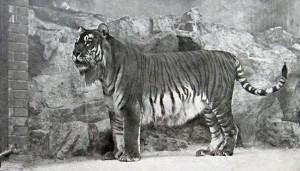Caspian tigers became extinct in the 1960s when the last feline predator died. The Caspian tigers were one of the largest subspecies to ever roam the earth, with their average body length being around 3 metres. Males weighed 170–240 kg. They were mainly found in the west and south river corridors of the Caspian Sea, Turkey, Iran and in the east in central Asia into the Xinjiang desert of China. Now scientists are trying to bring the cat back to life. A scientific plan, published in the journal of Biological Conservation, aims to use the Siberian tiger, a subspecies which is genetically similar to the Caspian. The authors write in their paper that the Siberians tiger’s “phenotype proves adaptable to the arid conditions of the introduction site.” In other words, they believe that the big cats — who primarily live in Russia’s birch forests — could adapt well to the conditions of the sites in Central Asia where they would be reintroduced. The scientists chose new habitat sites by factoring in how much people used the land, and concluded the ideal area to reintroduce the cat would be the Ili River delta and adjacent southern coast of Balkhash Lake, in China and Kazakhstan. Their main source of prey would be wild boar and types of deer. As a result, the researchers add, their respective populations also need to be brought up to “sustainable” levels. This could take more than a decade, however.
Ask me anything
Explore related questions





